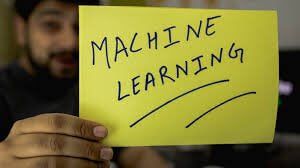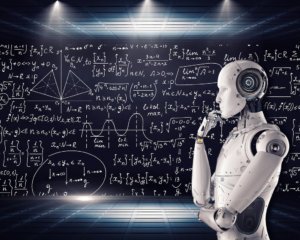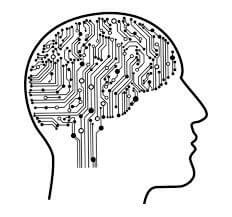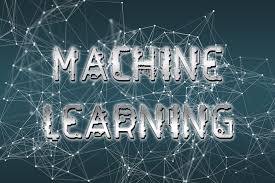Machine learning refers to a data analytics technique, which teaches computers to perform what naturally comes to humans – learning from experience. The term was coined in 1959 by Arthur Samuel – an American pioneer in the fields of artificial intelligence and gaming. Machine learning is unquestionably the latest buzzword in the tech landscape as it’s one of the most interesting and promising subfields of computer science.
Put simply, machine learning utilizes computational techniques to learn information straight from the data without depending on predetermined equations as models. The algorithms improve their performance adaptively as the total number of samples available for learning goes up.
By reading this article, unlock the potential of machine learning methods in diverse industries. Automate processes, predict outcomes, and make data-driven decisions for a brighter future.
1- Key advantages of using machine learning

With the emergence of big data, businesses across the globe are trying to leverage the power of machine learning. But why is machine learning gaining prominence so quickly? Let’s have a look at what businesses can do with it.
1.1- Simplified time-intensive documentation

Inaccuracy and data duplication are two major issues confronted by businesses looking to automate their documentation process. With the help of machine learning algorithms and predictive learning, this situation can be substantially improved. That’s because time-intensive data entry tasks can be performed by machines, thus leaving the skilled resources of a business free to concentrate on other value-added tasks.
1.2- In the medical industry

Machine learning techniques are utilized by many healthcare providers to predict admission rates. It also enables physicians to identify high-risk patients, make almost perfect diagnoses, predict readmissions etc.
In addition, medical systems are using machine learning techniques for different cost-cutting measures together with centralizing and streamlining expense reports as well as testing protocols.
1.3- In the financial industry

Machine learning has a crucial impact on the finance industry too. Some of the most common advantages of using machine learning in this sector include loan underwriting, algorithmic trading, portfolio management, and fraud detection, among others.
1.4- In the manufacturing industry

Though manufacturing businesses have preventive as well as corrective maintenance practices in place, these are sometimes inefficient and costly. This is exactly where machine learning can bring great benefits.
It helps in the development of efficient predictive maintenance plans, which businesses can follow to minimize the probabilities of unexpected failures, thus reducing unnecessary preventive maintenance tasks.
1.5- In the insurance industry

With the help of machine learning, insurance service providers can predict coverage plans and types of insurance that will be purchased by new customers. They’re also able to predict coverage changes, existing policy updates etc.
1.6- Easy spam detection

With the advent of machine learning, spam filters are developing new rules by utilizing brain-like neural networks to remove spam mails. The neural networks identify junk mail and phishing messages by evaluating the rules throughout a huge network of computers.
1.7- Product recommendation

Recommending the right product is a crucial aspect of any marketing and sales strategy. Machine learning models are able to analyze the purchase history of consumers and based on that, they can identify the products from a product inventory in which the consumers could be interested in. The algorithms identify a hidden pattern among the products and then combine similar products into clusters, which are then recommended to the customers.
Better customer segmentation

Before the advent of machine learning, accurate customer segmentation was a huge challenge for marketers. Today, the sales and marketing teams use machine learning to eliminate guesswork related to data-driven marketing.
All of these advantages and more have made machine learning a huge value-producing digital trend. With its help, businesses can now automate their analysis to interpret business interactions (that were done by humans earlier) and thus facilitate data-driven actions.
2- How do machine learning models work?

Machine learning models work in a relatively simple method. Here, we’ve prepared a simple example that would help you to understand the fundamental working method of machine learning models.
Say, you want to purchase the best water purifier available in the market. In the normal scenario, the process you’d follow is going through several water purifier reviews mentioning qualities about different models you’re considering to purchase. For instance, if you come across reviews that heavily feature words like great, excellent etc, you’d assume that those water purifiers are good and you can proceed to purchase it. On the other hand, if you see words like poor quality, bad etc, you’d conclude that it’s perhaps better to look for other products. So, the reviews help you take a decisive action based on those patterns of words that are present in those reviews.
So, it can be concluded that the relationship among the people who’ve already purchased the water purifiers and wrote reviews will impact potential buyers, and thus, the reviews, in turn, will impact future purchases. Therefore, a pattern exists between the existing buyers of the water purifiers and potential buyers. Put simply, this human decision-making process is what machine learning tries to encode.
Let’s have a look at the conditions that have to be met before machine learning is applied to a problem.
- A pattern has to exist in the input data, which would help the machine to arrive at a conclusion. To solve a problem using machine learning, the algorithms must have a pattern to deduce from.
- There has to be an adequate amount of data to apply machine learning and solve a problem. From the above example, if there’re no product reviews for water purifiers, it’ll be difficult to make a decision.
Now, let’s see how a machine learning model learns a target function.
A machine learning model performs a learning task where it’s used to perform future predictions when it’s given fresh examples of input samples. Essentially, any property of the target function isn’t known. So, machine learning is used to approximate this function by learning from given examples. It’s important to understand that if the properties of the target function are known to us, then there won’t be any requirement to apply machine learning. Instead, we could have directly used the target function to solve the equation.
But in the above example, the target function’s behavior cannot be described through an equation, and thus machine learning is applied to derive an approximation of that target function. Here the representation of product reviews is being tried to capture by the target function by mapping every kind of product review input to the output. To attain this, a hypothesis is developed by machine learning algorithms. This hypothesis may vary from time to time as the target function is unknown. So, to arrive at a better function that approximates the target function well, some iterations of that hypothesis are performed to estimate the best output. As a result, this hypothesis aids the machine learning algorithms to conclude a better approximation of that target function.
So, it can be concluded that the objective of machine learning algorithms is to find out a predictive model that generalizes to a specific type of data in the best way possible.
3- Machine learning methods

Tasks are usually classified into broad categories in machine learning. These categories are based on how feedback on the learning is offered to the system developed or how learning is received.
Two of the most commonly used machine learning methods include supervised learning and unsupervised learning. Let’s have a look at these methods in more detail.
3.1- Supervised learning

Here, example inputs are provided to the machine, which are marked as their preferred outputs. The objective of using this method is to make the algorithm learn by making a comparison of its actual output with taught outputs to identify errors and alter the model accordingly. A common example of supervised learning is to utilize historical data to predict future events that are statistically likely.
3.2- Unsupervised learning

Data remains unlabeled in unsupervised learning, thus making the learning algorithm responsible for finding commonalities among its input data. Machine learning methods that are capable of facilitating this method are particularly valuable because unlabeled data are more abundant in nature compared to labeled data.
The objective of unsupervised learning can be simply considered as identifying hidden patterns in a dataset. This method is commonly used for transactional data. Without being taught a correct answer, this method can look at complex data, which is seemingly unrelated and more expansive in order to organize it in different potentially meaningful ways.
4- Why machine learning matters?

According to most experts, artificial intelligence – the umbrella term of machine learning, will shape the future of mankind more powerfully than ever. And thanks to the emergence of machine learning over the past couple of years, we can now automatically and speedily develop models that’re capable of studying more complex models and arrive at more precise and faster results, even on a large scale. By developing a precise model, businesses can hold better chances of determining profitable opportunities and averting unknown risks.
Final thoughts

This was an overview of what machine learning is, its importance, how the models work fundamentally etc. If you’re interested in machine learning, there’re different types of courses available, both for the beginners and seasoned professionals.
Just one thing – you should remember that as machine learning is a field which is continuously evolving, it’s extremely important to note that approaches, algorithms, and methods are likely to change over time.
. . .
To learn more about machine learning, click here and read our another article.


